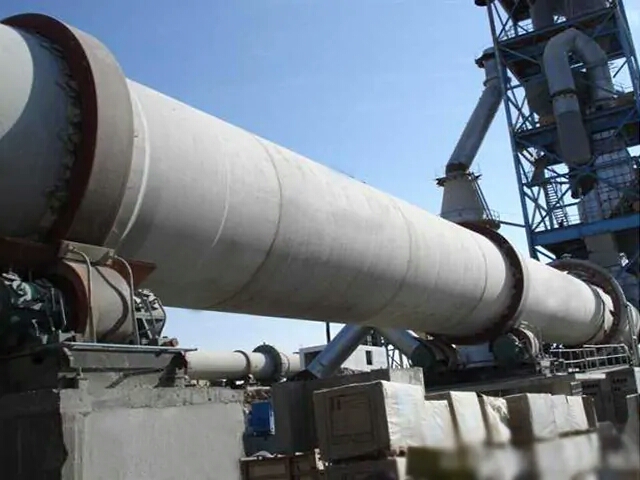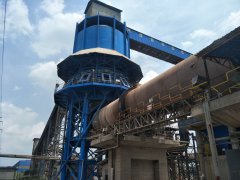A rotary kiln is a cylindrical, rotating furnace used for various processes such as calcination, sintering, pyrolysis, and others. It is a critical component in many industrial applications, particularly in the production of cement, lime, alumina, and other materials.
Key features and characteristics of a rotary kiln include:
1. Cylindrical Structure: A rotary kiln has a long, cylindrical shell that rotates on its axis. The axis is inclined slightly from the horizontal to facilitate the movement of materials through the kiln.
2. Material Movement: Raw materials or products to be processed are fed into one end of the kiln. As the kiln rotates, the materials move gradually along its length from the feed end to the discharge end.
3. High Temperatures: Rotary kilns operate at high temperatures, often exceeding 1,000 degrees Celsius (1,800 degrees Fahrenheit). The high temperatures are necessary for various thermal processes such as calcination, where materials are heated to cause chemical or physical changes.
4. Heat Source: The heat required for the processes inside the rotary kiln is typically provided by a direct flame or hot gases produced by burning fuels such as coal, natural gas, or oil. The heat source is directed into the kiln to raise the temperature of the materials.
5. Refractory Lining: The interior of the rotary kiln is lined with refractory materials to withstand the extreme temperatures and conditions. The refractory lining helps protect the kiln shell and maintain the required thermal environment.
6. Variety of Applications:
- Cement Production: Rotary kilns are widely used in the production of cement. Raw materials such as limestone, clay, and silica are processed in the kiln to produce clinker, a key component of cement.
- Lime Production: In the production of lime, limestone is heated in the kiln to produce quicklime.
- Metallurgical Processes: Rotary kilns are used in various metallurgical processes, including the production of alumina from bauxite, roasting of iron ore, and other applications.
- Waste Incineration: Rotary kilns can be used for the incineration of hazardous waste.
7. Controlled Environment: The rotation of the kiln and the controlled environment inside facilitate uniform processing and heat distribution, ensuring efficient and controlled reactions.
Rotary kilns are versatile and crucial in various industries for thermal processing applications that involve high temperatures and controlled environments.



